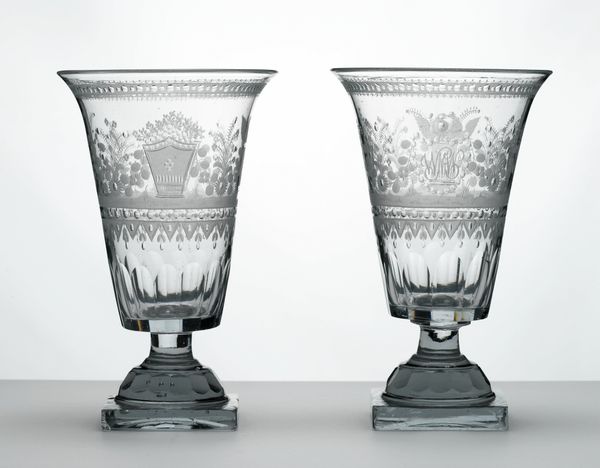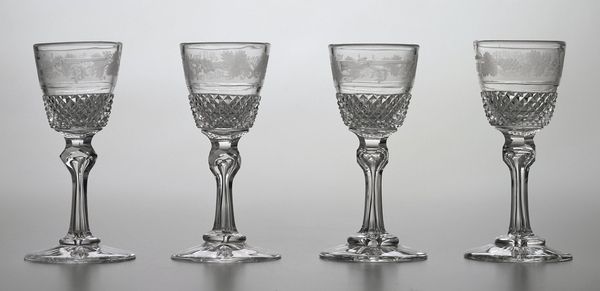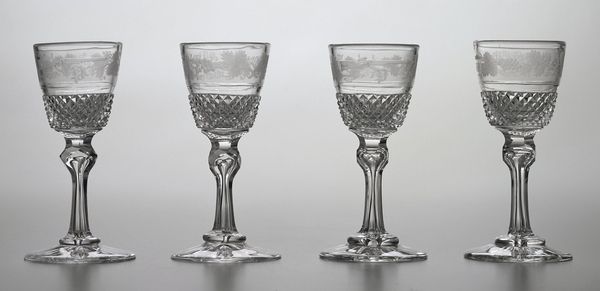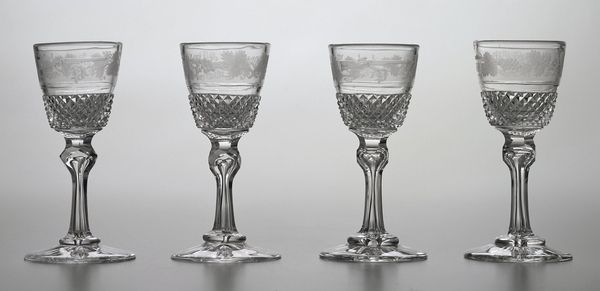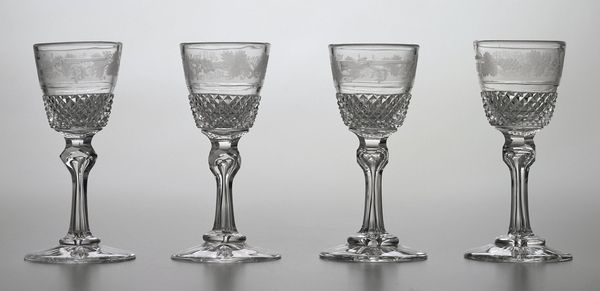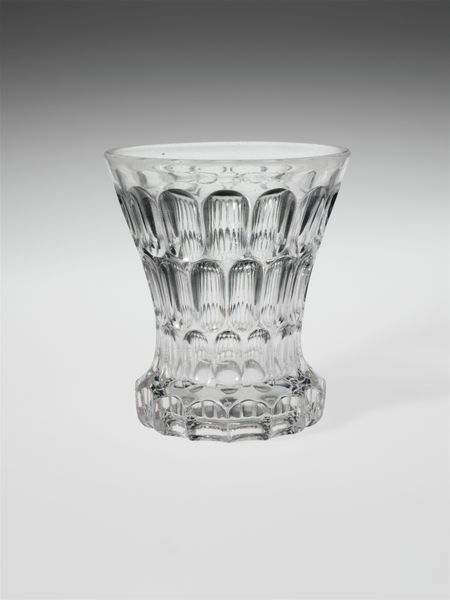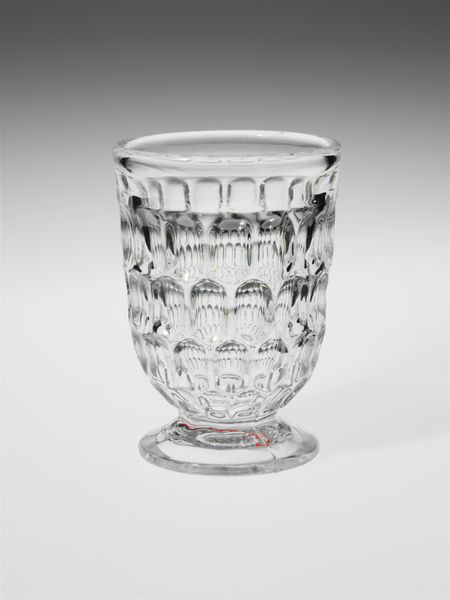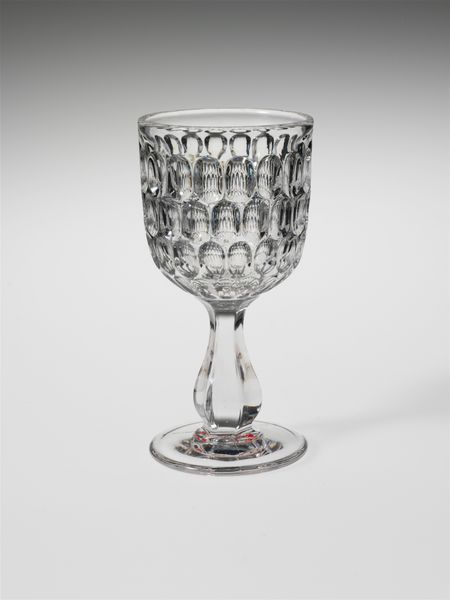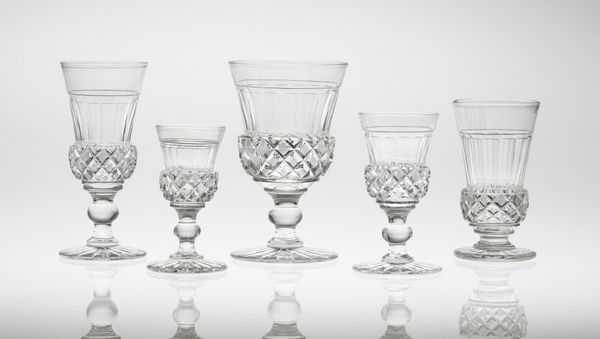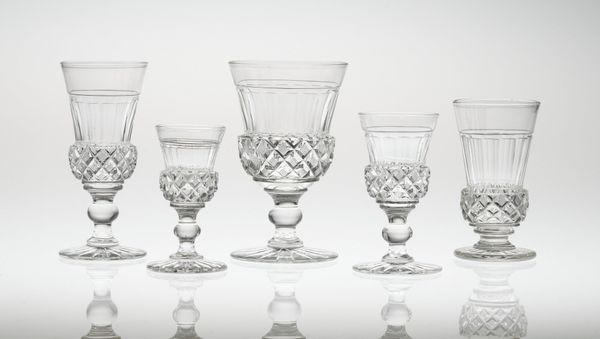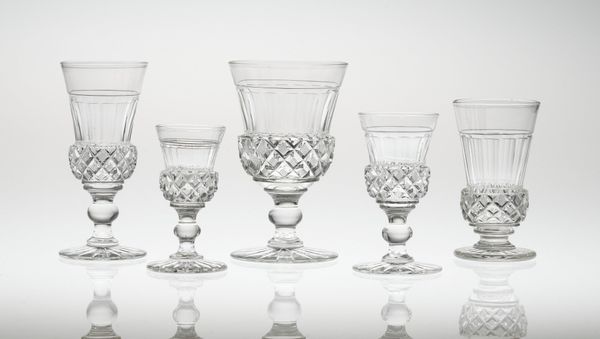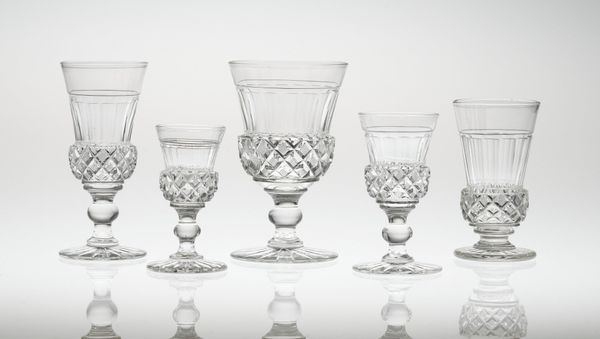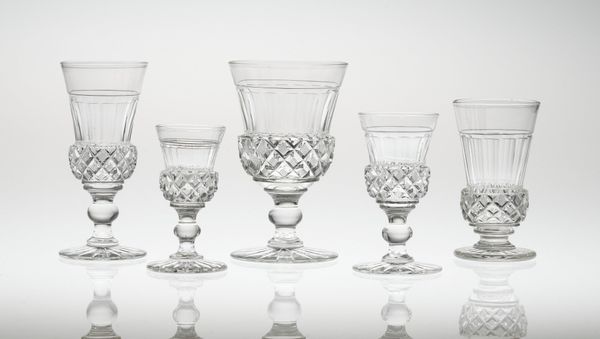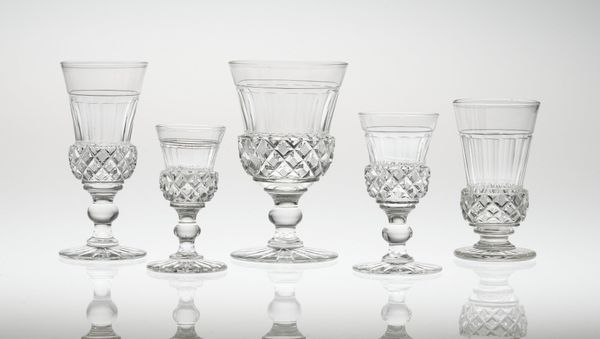
glass, engraving
#
glass
#
decorative-art
#
engraving
Dimensions: 9 1/8 x 5 3/4 x 5 3/4 in. (23.18 x 14.61 x 14.61 cm)
Copyright: Public Domain
Curator: This is a celery vase, dating back to around 1818. It was crafted by Bakewell, Page & Bakewell and now resides at the Minneapolis Institute of Art. Its primary material is glass, enhanced with delicate engraving. Editor: It looks surprisingly austere, almost monumental for something designed to hold celery. The glass gives it a certain weight, despite its transparency. Curator: These weren't everyday objects. Owning such a vase was a statement, reflecting on emerging middle-class desires. Celery itself was somewhat of a status symbol. Displaying it showed you had access to luxury and could afford refrigeration to keep it crisp! Editor: Fascinating! I’m drawn to the process— the blown glass, then meticulously engraved. Did the makers reflect on their relationship with the emerging markets or labor when engraving these decorative items? I'd love to study records of the glassblowers. Curator: The symbolism here is so evocative. The floral motifs and, on one of the vases, a set of initials framed with the federal eagle – these are markers of early American identity, of aspirations toward wealth, taste, and civic pride in the new nation. We see the American ideal intertwined with the acquisition of status symbols. Editor: Exactly, and I am eager to analyze where those materials come from, how much the workers earn to manipulate the molten glass. Did this form have any relationship with older models of vases, any way that this kind of decoration reflects global distribution chains, the movement of raw materials across borders? Curator: It's an interesting interplay between craft and industrialization, especially at that specific time period. You had both incredibly skilled artisans and this rising pressure to manufacture more goods more quickly for expanding markets. The quality of the engraving versus the uniformity of the glass speaks to that tension. Editor: Yes, those engravings become not just a symbol but also a social indicator. Their fineness represents access to that kind of art, of decoration, that comes along with certain class. The form itself, the glass as a substance is fascinating: easily broken, transparent... what does it tell us about society? Curator: It tells us about what people wanted to project! Celery might seem like an odd choice for such an elaborate vessel today, but its presence highlights social stratification. How do you perceive its meaning today? Editor: After all this looking and talking, I am mostly excited to know more about how the process of making changed social dynamics at that time. I wonder, who will keep asking this question next? Curator: I hope we’ve given future observers the threads they need to investigate further into its complex intersectionality.
Comments
minneapolisinstituteofart almost 2 years ago
⋮
This celery vase is one of a pair noted for the quality of neoclassical decoration, including engraved garlands of flowers, kissing doves, and vessels crowned with the leaves of celery stalks. The last embellishment is self-referential, as this vase was used for displaying celery. based on its shape and skillfully executed decoration, it was probably made by Bakewell, Page and Bakewell, the first firm in America to excel in the production of cut and engraved glass. Bakewell employed the most successful English and Continental European glass engravers who had recently immigrated to America. The firm came to prominenence through furnishing the White House with glass during the Madison, Monroe, and Jackson administrations. The engraved monogram on the vases, "WmW"
Join the conversation
Join millions of artists and users on Artera today and experience the ultimate creative platform.
